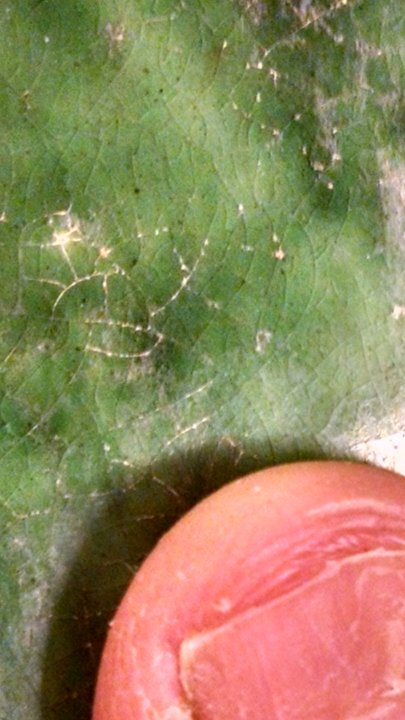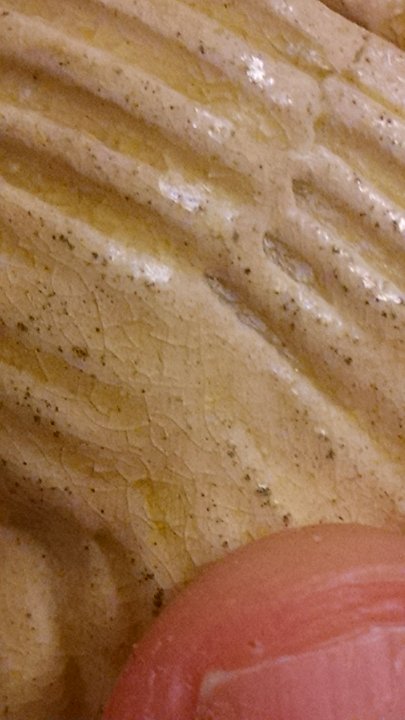
|
Subject:Re: Importance of crazing/crackle in dating pieces?
Posted By: Paul Benson Sun, Aug 09, 2015
Here is an additional picture of the crazing that may look a little clearer under zoom. I wish I could get a real good shot to show what I see with a loupe, it is really quite beautiful to me. (Maybe just because I am new to this.)
Also I gave this statue a good cleaning with warm mildly soapy water and a scouring pad for dishwashing. Now moat of the crud is gone and it really is looking nice.
I had read where you should give the unglazed areas a good wetting with a spray bottle and look for cracks or seams to show up. I was very disappointed to find evidence of what would seem to me to be serious damage to this statue which had been repaired. The base shows a crack from one side to another both top and bottom indicating it had most likely been broken clean in two.
I don't know how this could have happened without breaking a least two of the legs. The only thing I can see is a hairline crack in the rear lower leg/foot that doesn't seem to be a part of the craze pattern. My eyesight is very poor but it seems to me a repair would be more evident. Is it common for repairs to be so good they almost can't be seen? Again please pardon my limited knowledge in these matters. I also found fractures around the belly hole area, a possible repair to an ear, and evidence the seat of the saddle had probably taken an impact at some time.
Although I was quite unhappy to find such damage I guess it's not that suprizing and I am pleased with the improved look after the cleaning. It seems to have brought out the luster or richness of the glaze particularly the green. Thanks to all again. Paul
.jpg)
.jpg)
.jpg)


|
 Importance of crazing/crackle in dating pieces?
Importance of crazing/crackle in dating pieces?  ( China & Japan ) - Paul Benson - Aug 08, 2015 (12:30 PM)
( China & Japan ) - Paul Benson - Aug 08, 2015 (12:30 PM)  Re: Importance of crazing/crackle in dating pieces? - WIL HUGERS - Aug 09, 2015 (01:52 PM)
Re: Importance of crazing/crackle in dating pieces? - WIL HUGERS - Aug 09, 2015 (01:52 PM)  Re: Importance of crazing/crackle in dating pieces?
Re: Importance of crazing/crackle in dating pieces?  - Paul Benson - Aug 09, 2015 (03:43 PM)
- Paul Benson - Aug 09, 2015 (03:43 PM) 


.jpg)
.jpg)
.jpg)